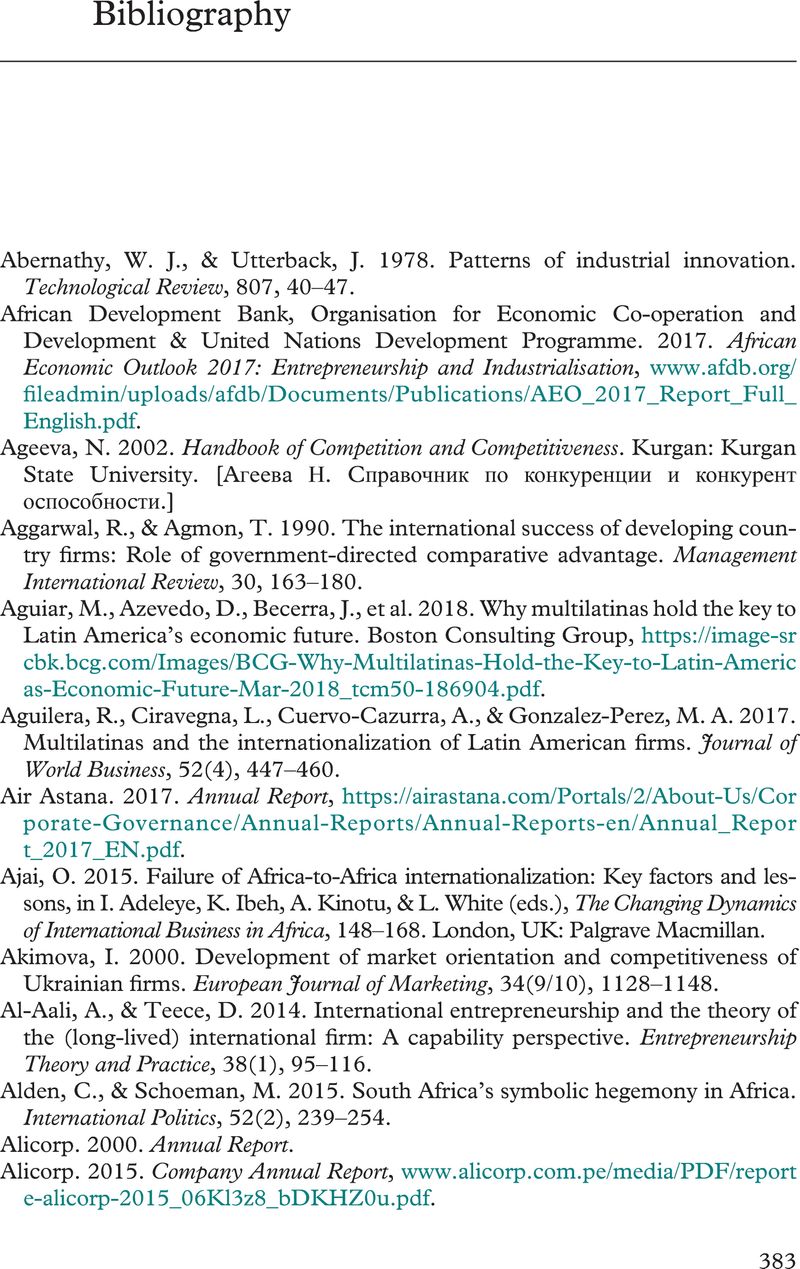Book contents
- Building Strategic Capabilities in Emerging Markets
- Building Strategic Capabilities in Emerging Markets
- Copyright page
- Contents
- Figures
- Tables
- Notes on the Contributors
- Preface
- 1 Building Strategic Capabilities in Emerging Economies
- 2 Upgrading Capabilities in Emerging Markets
- 3 Building Strategic Capabilities in Chinese Companies
- 4 Strategic Capabilities of Emerging Indian Multinational Enterprises
- 5 The Capabilities of South African Multinational Enterprises in Wider Africa
- 6 Five Cases on Strategic Capabilities of Russian Firms
- 7 Strategic Capabilities of Polish Firms
- 8 Emerging Market Multinationals
- 9 Internationalization Capabilities of Argentine Firms
- 10 Building Strategic Capabilities in Brazilian Firms
- 11 Building Strategic Capabilities in Chilean Companies
- 12 Strategic Capabilities of Colombian Firms
- 13 Capabilities of Mexican Exporters and Multinational Corporations
- 14 Building Strategic Capabilities in Emerging Market Firms
- 15 Examining Strategic Capabilities Across Emerging Markets and Their Firms
- Bibliography
- Index
- References
Bibliography
Published online by Cambridge University Press: 09 October 2020
- Building Strategic Capabilities in Emerging Markets
- Building Strategic Capabilities in Emerging Markets
- Copyright page
- Contents
- Figures
- Tables
- Notes on the Contributors
- Preface
- 1 Building Strategic Capabilities in Emerging Economies
- 2 Upgrading Capabilities in Emerging Markets
- 3 Building Strategic Capabilities in Chinese Companies
- 4 Strategic Capabilities of Emerging Indian Multinational Enterprises
- 5 The Capabilities of South African Multinational Enterprises in Wider Africa
- 6 Five Cases on Strategic Capabilities of Russian Firms
- 7 Strategic Capabilities of Polish Firms
- 8 Emerging Market Multinationals
- 9 Internationalization Capabilities of Argentine Firms
- 10 Building Strategic Capabilities in Brazilian Firms
- 11 Building Strategic Capabilities in Chilean Companies
- 12 Strategic Capabilities of Colombian Firms
- 13 Capabilities of Mexican Exporters and Multinational Corporations
- 14 Building Strategic Capabilities in Emerging Market Firms
- 15 Examining Strategic Capabilities Across Emerging Markets and Their Firms
- Bibliography
- Index
- References
Summary

- Type
- Chapter
- Information
- Building Strategic Capabilities in Emerging Markets , pp. 383 - 411Publisher: Cambridge University PressPrint publication year: 2020

